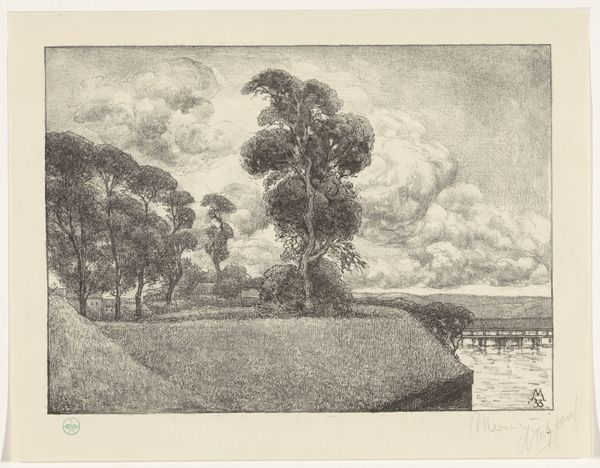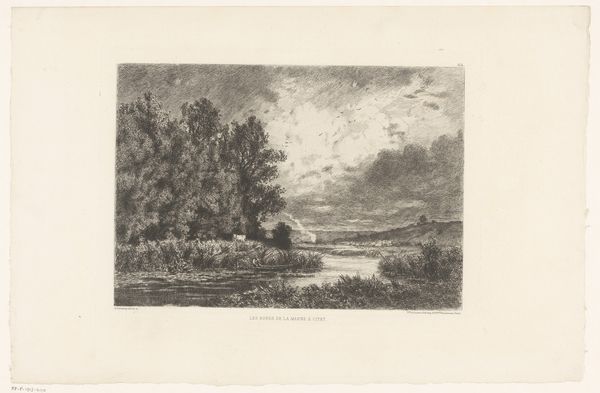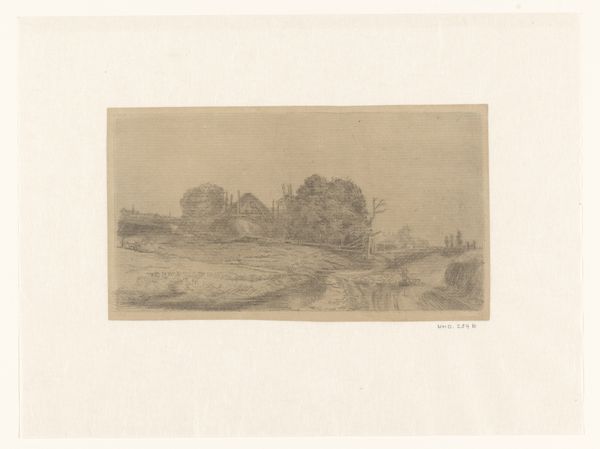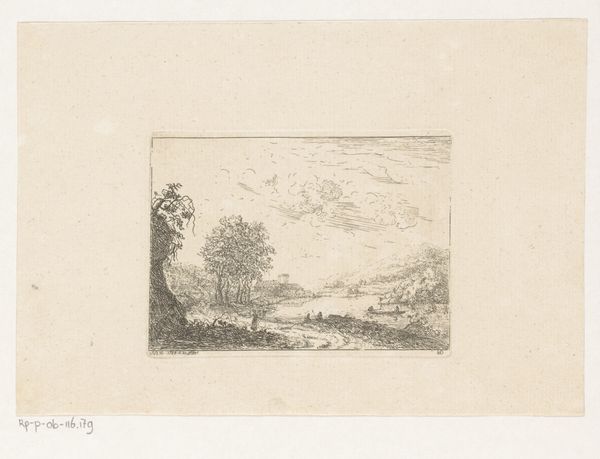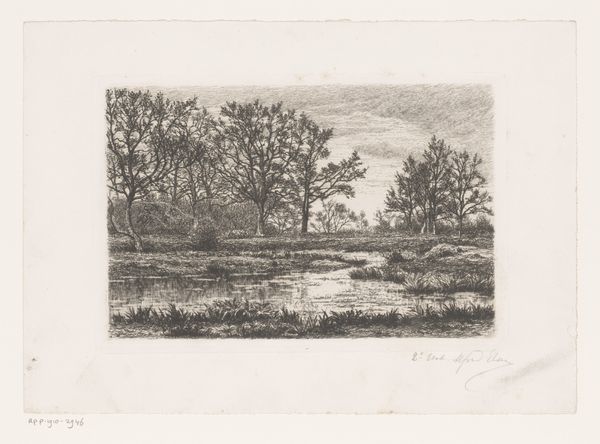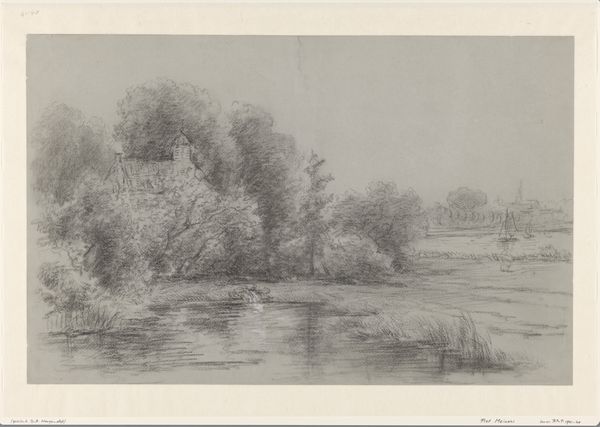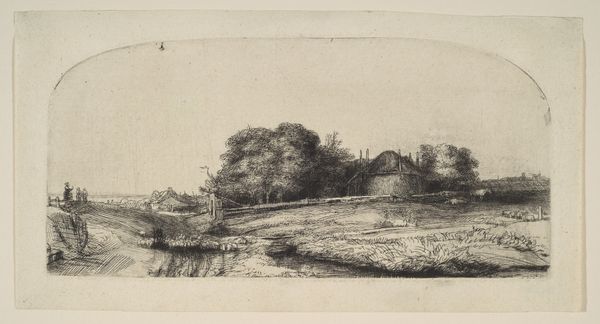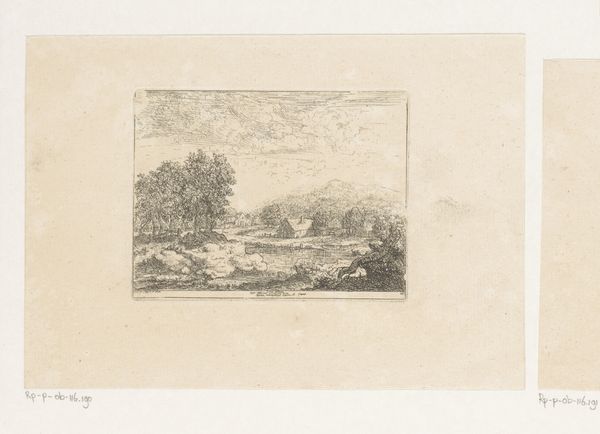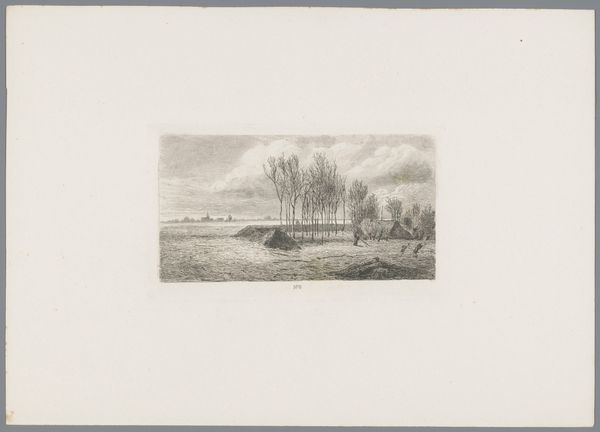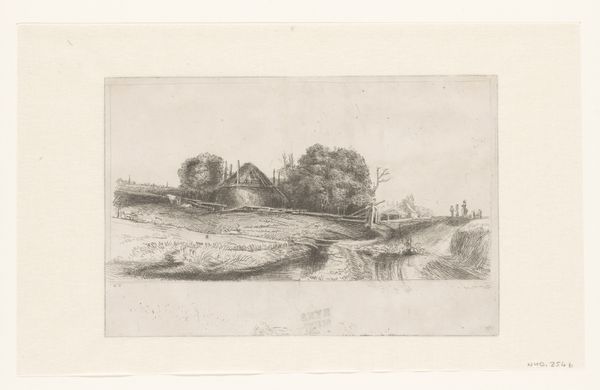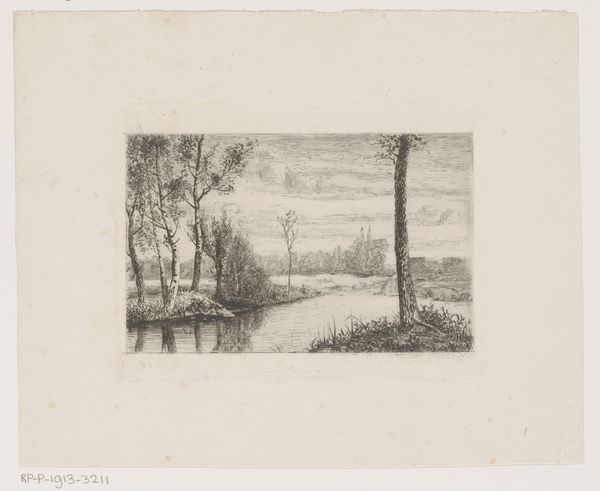
drawing, pencil
#
drawing
#
pencil sketch
#
landscape
#
etching
#
pencil
#
modernism
#
realism
Dimensions: height 230 mm, width 298 mm
Copyright: Rijks Museum: Open Domain
Editor: Here we have Simon Moulijn's "Gezicht op bastion Promers vanaf bastion Oranje," a pencil drawing from 1933. The details are amazing for a simple drawing – I almost feel like I'm looking at a photo, yet there's an undeniable moodiness. How do you interpret this work? Curator: This pencil drawing is not just a straightforward landscape; it speaks volumes about the means of production, and the context it was produced in. Consider the accessibility of pencil as a medium during that period, enabling artistic expression even with limited resources. Think of it as the people's art tool! Editor: Interesting. So, the choice of pencil itself has significance beyond just being a readily available material? Curator: Absolutely. The labor involved in creating such detailed shading with pencil should also be considered; a slow, deliberate process. It bridges the gap between high art and the "work" involved in making something, blurring the lines of what gets deemed ‘art’. What do you see as the subject's engagement with that? Editor: Well, maybe it speaks to the democratization of art – making landscape drawing accessible instead of some grand oil painting reserved for the elite. Curator: Precisely! Moreover, by choosing a location with "bastion" in its name, does the image suggest that something other than "peace" was on the artist's mind when capturing this otherwise quiet scenery in 1933? Editor: Wow, I hadn't even considered the location's name in connection with the socio-political environment of that period. Now I have a whole new way of considering materiality, artistic intention, and audience reception. Curator: Exactly. It allows you to start examining social power, labor, and economic standing as part of the aesthetic reading, in even a simple sketch!
Comments
No comments
Be the first to comment and join the conversation on the ultimate creative platform.
